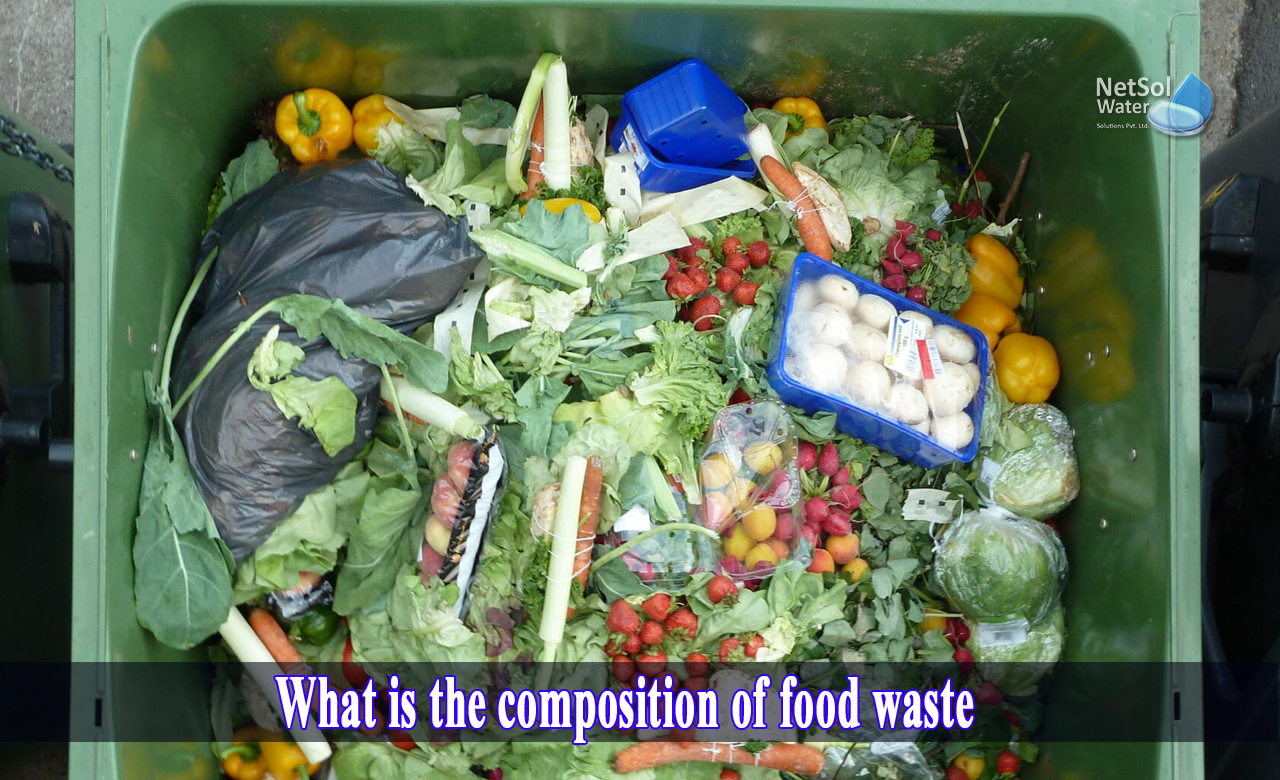What is the composition of food waste?
Food waste is defined as unconsumed food. Food waste or loss occurs throughout the food system, including production, processing, distribution, retail and food service sales, and consumption.
Food waste contributes significantly to the impact of agriculture on climate change (3.3 billion tons of CO2 emissions each year) and other environmental concerns such as land usage, water use, and biodiversity loss.
-When avoidance of food waste is not practicable, the food waste hierarchy rates food waste treatment alternatives from favoured to least liked based on their negative environmental implications.
-After prevention, the next best technique is to reuse extra food meant for human consumption, such as food donation, followed by animal feed, nutrient and energy recycling, and the least desired choice, landfill, which is a major producer of the greenhouse gas methane.
Other factors to consider include un-reclaimed phosphorus in food waste, which might lead to further phosphate mining. Furthermore, decreasing food waste across the food chain is a significant aspect of lowering agriculture's environmental impact by reducing the overall quantity of water, land, and other resources needed.
Food waste properties
Food waste accounts for the lion's share of waste that ends up in landfills. Degradation, particularly anaerobic degradation, adds to greenhouse gas emissions and global warming once landfilled.Furthermore, the important nutrients found in organic debris are locked up, increasing our reliance on scarce virgin supplies of fertilizer. Aside from these two issues, current energy demand is increasing due to increased population and industrial activity around the world, while the scarcity or high price of conventional energy resources poses critical socioeconomic constraints, necessitating the identification of renewable energy resources. Over the last two decades, food waste has emerged as an appealing alternative fuel for energy generation.
Content of carbohydrate, protein and lipid
Food waste has a carbohydrate content that ranges from 16.6% to 74.6% on average. Cooked meals and certain simulated food wastes have high glucose content. If the carbohydrate contents of the simulated food wastes are not taken into account, the average is around 48.4 percent.
The protein level in food waste ranges from 5.5 percent to 42.2 percent, with an average value of 20.5 percent, while the lipid content is 21.5 percent.
Protein content is found to be greater in the summer and decreases by 40% during the winter season. Protein degradation releases ammonium in in anaerobic digestion reactors; hence, a high concentration might result in ammonia toxicity, whereas a low protein content could result in insufficient buffering.
Conclusion
As public awareness of rising food waste level grows, consumers are increasingly looking to innovation and technology to help them tackle the problem which includes use of Food waste Recyclers.
If you'd like to learn more about how a Food Waste Recycler might help you transform residential/commercial waste, call on +91-9650608473 or send an email to enquiry@netsolwater.com and assist your company in becoming more environmentally friendly!
Netsol Water is Greater Noida-based leading water & wastewater treatment plant manufacturer. We are industry's most demanding company based on client review and work quality. We are known as best commercial RO plant manufacturers, industrial RO plant manufacturer, sewage treatment plant manufacturer, Water Softener Plant Manufacturers and effluent treatment plant manufacturers. Apart from this 24x7 customer support is our USP. Call on +91-9650608473, or write us at enquiry@netsolwater.com for any support, inquiry or product-purchase related query.



